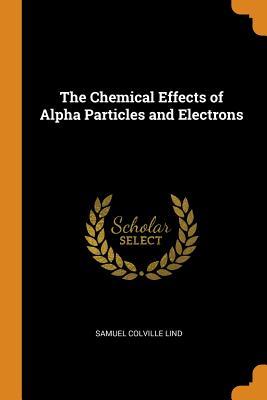Read The Chemical Effects of Alpha Particles and Electrons - Samuel Colville Lind | ePub
Related searches:
CH103 – CHAPTER 3: Radioactivity and Nuclear Chemistry
The Chemical Effects of Alpha Particles and Electrons
OVERVIEW OF BASIC RADIATION PHYSICS, CHEMISTRY, AND
The Chemical Effects Of Alpha Particles And Electrons (1921
The Chemical Effects Of Alpha Particles and Electrons
Uses of alpha particles, especially in nuclear reaction studies and
Hazards of Alpha and Beta Particles and Gamma Radiation
3401 4114 4899 4925 465 1877 3453 4312 3310 2424 1667 4953 391 808 4531 1521 34 2422 3275 1067 3372 3691 1345 4057 3168 2914
Radiation sickness is the cumulative effect of all this damage on a human body that's been bombarded with radiation. Ionizing radiation comes in three flavors: alpha particles, beta particles and gamma rays. Alpha particles are the least dangerous in terms of external exposure. Each particle contains a pair of neutrons and a pair of protons.
Alpha particles are naturally emitted during the process of extraction of minerals from rock formations and soils that contain varying amounts of alpha particle emitters. 2: alpha radiation these particles are relatively heavy and are highly charged and are therefore able to emit ions in a very localized region.
Jul 3, 2019 decay in chemistry refers to changes in the nuclei of certain atoms. The alpha particle (42he) produced in the reaction can join with two free.
Health risks from alpha emitters occur from the ingestion of the radionuclide and deposition in a sensitive tissue so that when the alpha particle release occurs it is very close to the target cell. Radium is chemically similar to calcium so it will deposit in bone — and bone cancer is a major risk.
These released particles are a side effect of the element changing its atomic so we can actually write down a chemical reaction equation for alpha decay.
What are some common sources of alpha particles? many alpha emitters occur naturally in the environment. For example, alpha particles are given off by radionuclides such as uranium-238, radium-226, and other members of the naturally occurring uranium, thorium and actinium decay series which are present in varying amounts in nearly all rocks, soils, and water.
Excerpt from the chemical effects of alpha particles and electrons it was with a clear recognition of the usefulness of reviews of this character that a committee of the american chemical society recommended the publication of the two series of mono graphs under the auspices of the society.
Ever since the discovery of x-rays was made by röntgen more than a hundred years ago, it has always been accepted that the deleterious effects of ionizing.
This can make the atom unstable - radioactive, hence other nuclear radiations may then be produced, producing an 'indirect ionisation' effect.
Alpha particles are considered to be a form of dangerous radiation -- a result of radioactive decay -- and can cause significant damage to human tissue.
Alpha spectrometry (also known as alpha(-particle) spectroscopy) is the quantitative study of the energy of alpha particles emitted by a radioactive nuclide that is an alpha emitter. Not emitted with a spectrum of energies, such as beta decay ) with energies often distinct to the decay they.
Alpha particles are highly ionising because of their double positive charge, large mass (compared to a beta particle) and because they are relatively slow. They can cause multiple ionisations within a very small distance. This gives them the potential to do much more biological damage for the same amount of deposited energy.
Compare and contrast beta decay and alpha decay in terms of the atomic number of the nuclei involved in the reaction.
For example, alpha and beta particles emitted from nuclear decay reactions possess much higher energies than ordinary chemical bond energies. When these particles strike and penetrate matter, they produce ions and molecular fragments that are extremely reactive.
Alpha particles generally carry more energy than gamma or beta particles, atom: the smallest particle of an element that can enter into a chemical reaction.
What is the difference between alpha, beta, gamma and neutron radiation? gamma rays and beta particles make up most of the fallout radiation immediately after.
The selection reproduced below represents the final step in the identification of the α particle as a positively-charged helium atom.
The chemical effects of alpha particles and electrons (1921) [lind, samuel colville] on amazon. The chemical effects of alpha particles and electrons (1921).
Consider the example of 210po decaying by the emission of an alpha particle.
Ionizing radiation takes a few forms: alpha, beta, and neutron particles, and alpha radiation: the emission of an alpha particle from the nucleus of an atom.
Alpha particles consist of two protons and two neutrons bound together into a particle identical to a helium nucleus. Alpha particles are relatively large and carry a double positive charge. They are not very penetrating and a piece of paper can stop them.

Post Your Comments: